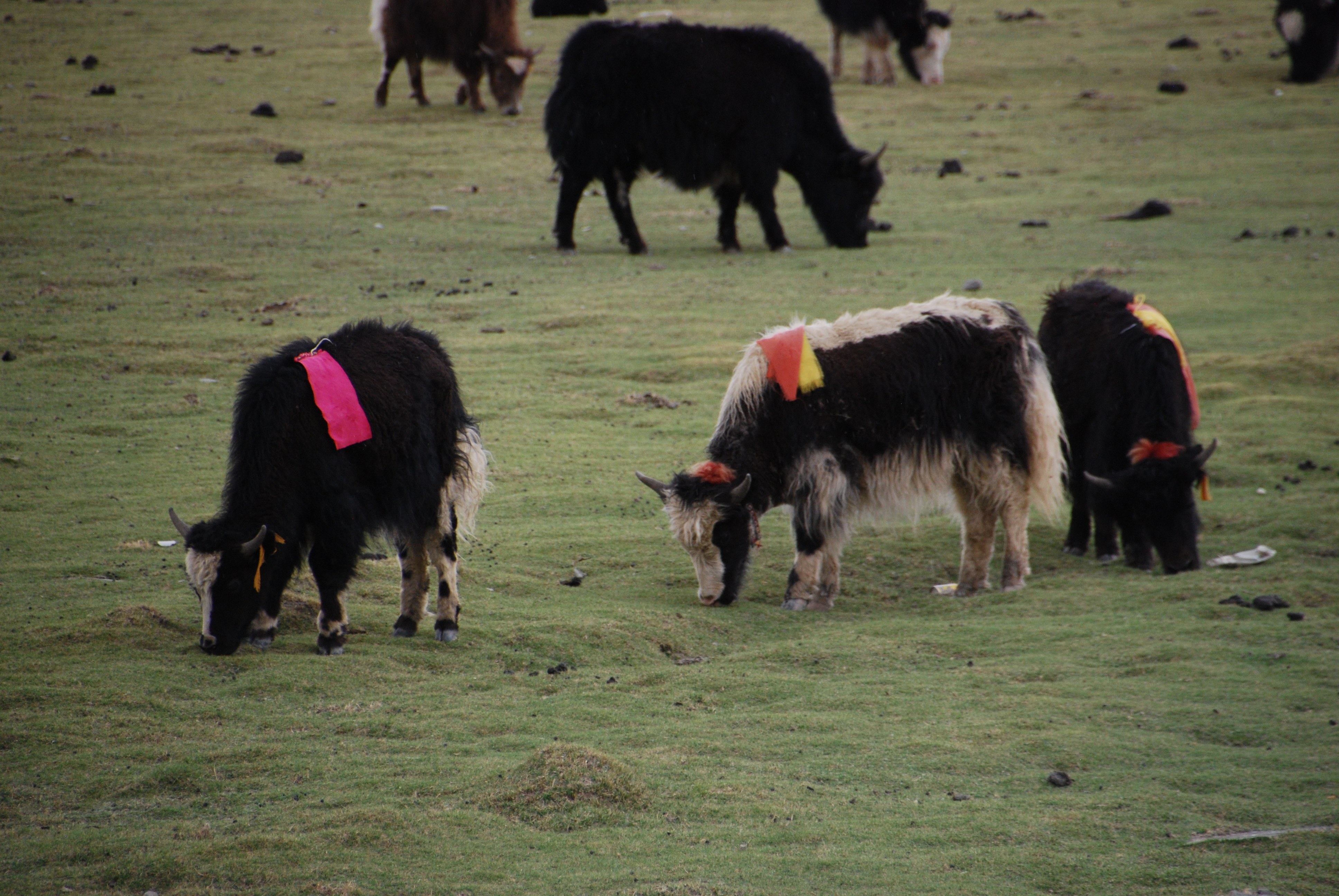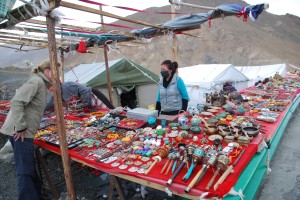Mountains for monasteries
The Tibetan plateau, as this vast region of high elevation is called, is much more than just a plateau. Amongst many features it forms the ‘other side’ of the vast Himalaya mountain range that runs through Nepal, parts of India and Bhutan. Today we started our assault on this ‘other side’ with a few dramatic mountain passes, a wide range of weather and some of the most spectacular scenery imaginable.
Today Kelsang had promised us only mountains and no monasteries. Worried about withdrawal symptoms in addition to elevation problems we bravely soldiered on. Overnight the weather had turned ‘Tibetan’, more what we expected with wind, rain and a grey sky. The wind in particular had stirred up the huge sand dunes that ran up and down the mountains on both sides of the valley and it cast a thick sandy haze as far as we could see.
We left the fertile fields of the Yarlung Valley, where farmers enjoy relative prosperity by growing fields of wheat and barley. The young green healthy barley crops was strong evidence that Tibet can grow most of its vegetables for year round consumption, storing what they need for the harsh winters. Only rice needs to be imported from China. The mud brick squarish two story Tibetan homes are stylishly simple, designed to house up to three generations plus food and even animals. Their signature piece is always the big fancy ornate doors with large brass rings – very handsome.
Kelsang told us of two important festivals in rural Tibet. The first is the Harvest Festival which is held in August each year to celebrate the harvest of barley before the harsh winter. The second is the Bathing Festival which is held in September and is the only time of year the villagers have a proper bath. They all go down to the river, strip off and wash up big time. Apparently its quite an event although some of the details eluded us. For these tough villagers living in such harsh conditions there is no reason to waste valuable time and effort on bathing unless it is festival time.
The road up Khamba La Pass twisted and turned with the contour of the mountain, switchbacking up steep sides and winding around tight corners. The brown mountain was barren of life except for the occasional grazing yak or scroungy herd of sheep and long hair goats with their peasant shepherd.
We stopped at a dramatic lookout at 4,200 metres, breathless with the view and the lack of oxygen. But the road kept going up and finally we topped out at 4,790 metres with dramatic vistas on the other side of the ridge of the huge Yamdrok Tso, a monster lake of turquoise blue water glistening far below us. And far in the distance, covered in glaciers and partly hidden by clouds, was Mt Noiin Kangtsang at 7,190 metres.
From there the road dropped down to the lake and followed it for quite a while, giving us great chances to stop for photos and many oohs and aaas. At one stage we took a rough dirt track as a shortcut and drove through a field of large yaks, grazing away their day, coloured ribbons in their ears as a form of branding. It started to hail, and then hail harder as the weather continued to play havoc with the visibility of the mountains (although it did seem more appropriately Tibetan than sunny blue skies).
We stopped for lunch at a local restaurant in the dirty lakeside town of Nangartse, not notable except for the hearty people who live there. Then it was on up more mountains, winding up to the next pass with even more foreboding and moody clouds sitting on us. As we approached the top it started to snow, softly at first and then harder, making the whole scene both beautiful and eerie. And to add to the moment, the windscreen wipers on our ancient Land Cruiser weren’t working so Pemba had extra duty to do.
And then we hit the top of Karo La Pass, summiting at an amazing 5,010 metres. Never could I have imagined one could drive up this high and yet here we were. We were more than twice as high as the highest peak in Australia, higher than any point in continental US, higher than any point in Europe and yet we drove there.
The clouds were so low visibility was almost zero and snow was falling harder so there was no chance of seeing the huge glacier that was apparently right in front of us. A couple of quick photos to avoid the outrageous parking fees by the locals, a shiver and a quick look around before we piled back into the Land Cruiser and started descending.
Our Land Cruiser is 20 years old and feels it as Pemba negotiates these tight scary mountain turns. It lacks the suspension and steering capabilities of newer (or better maintained cars) and we are totally dependent on Pemba to see us through. So far so good.
As we lost elevation we came across a group of Tibetan deer playing in the new sunshine. We also stopped for photos of herds of sheep and goats in almost biblical scenes on the mountain slopes. As we drove further down the valley opened up into some vast almost endless spaces of harsh dry land. But intrepid farmers had built terraces and were back at it growing barley and potatoes as best they could, providing a green tinge to the many shades of brown that surrounded us.
But the mountains were the star attractions, huge rocky faces seemingly cut by glaciers eons ago, beautiful shades of dark sand dunes on the steep slopes, twisted geologic strata formations running through the rocks and huge washes where snow melt would do its damage every spring. Beautiful stuff.
We went over the Simu Pass at 4,330 metres and nearly got blown off the mountain by the demonic winds while trying to take photos before eventually settling down into another open valley and entering the town of Gyantse where we would spend the night. Gyantse has only about 15,000 people now (Tibet’s fourth largest) but has a proud history and we took some time to have an amazing wander through its old part of town where some buildings have been lived in since the 15th century.
Our hotel was Tibetan (not Chinese), thank goodness, and we had good Indian at the local restaurant. We were happy that Kelsang got a room tonight because last night the big Chinese hotel would only give our crew one room and she gave it to the driver which meant she had to sleep in the car. She had previously told us (without prompting) that her salary is only 160 Yuan (about $26) per day and she only gets paid when she is leading a tour so a bed seems only fair.














